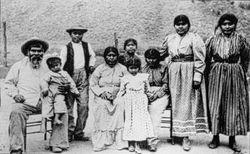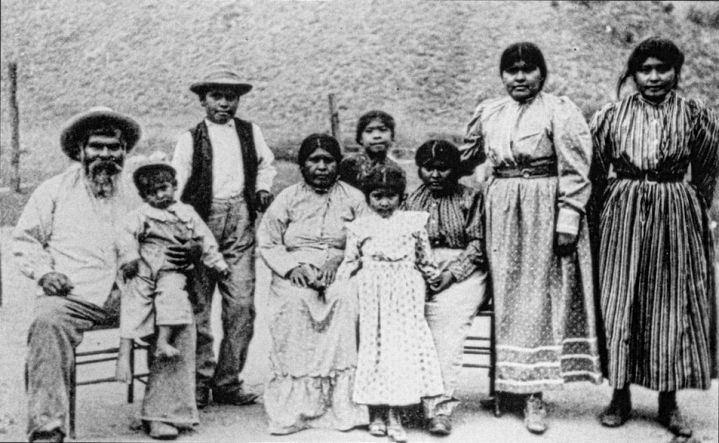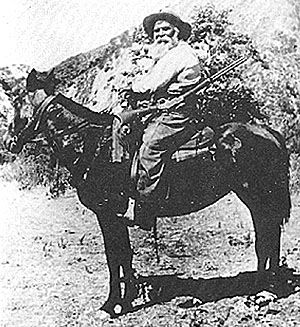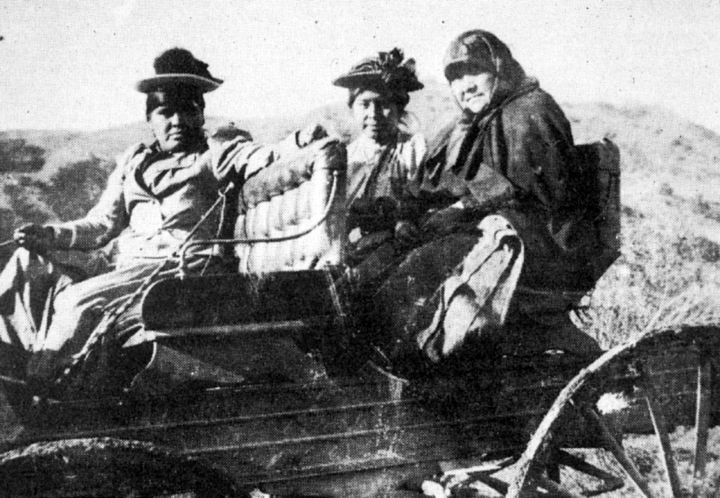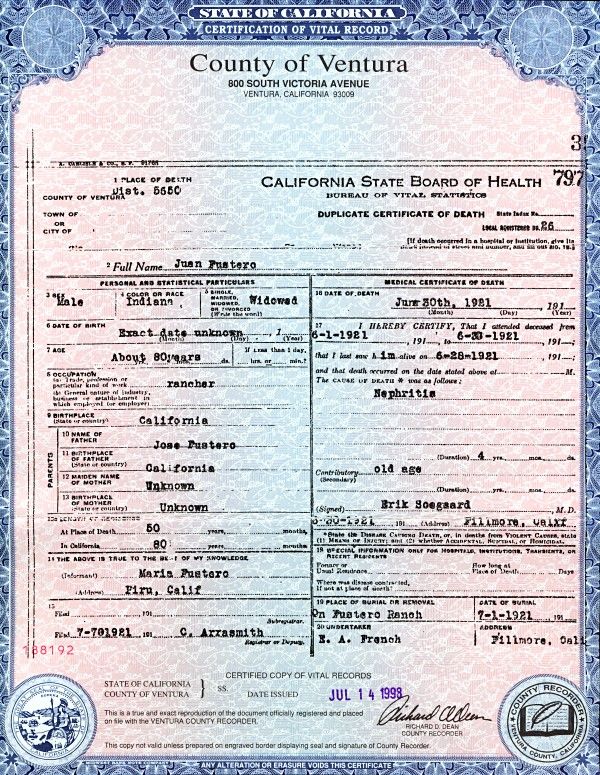"Juan Jose Fustero was born in 1841 near a sweathouse at the mouth of Holzer Canyon about two miles south of present day Lake Piru. Juan, by the tradition of the time, was the last full blooded Piru (pi'rukvit) Indian.
At the age of 32, Juan Jose sought U.S. citizenship in court in Ventura County. Needing a last name (The Tataviam focused only on their first names.), the judge ascertained that Juan, like his father, was a maker of saddle trees, so he assigned the last name of fustor to Juan to reflect his trade. Juan's father, also named Juan Jose, died some years later without a last name.
Juan enjoyed a relatively simple life in Piru Canyon. He seems to have garnered the respect of his Anglo-American neighbors as one of the best lasso and saddle tree makers, horsemen and ropers in Ventura County and as the last of the Pi'i-rukvit. Juan's father had sold much of his portion of Piru Canyon when Juan was sixteen for the price of 40 horses cut from the herd of Don Ygnacio del Valle at Rancho Camulos.
Juan became as famous for his gold as for his horsemanship. Periodically he would take the train into Los Angeles, where he would sell a polk of gold dust and an armload of reatas (lassos) fashioned from the native grasses of Piru Canyon. Most of the money was used in the bars of Los Angeles, but he would return each time with enough money to pay his grocery tab to L.B. Mayfield in the community of Piru. Juan and his family would then survive on the new tab until he again traveled to Los Angeles. Grocer Mayfield, eventually adopted the habit of borrowing $50 from Juan every so often, so that when Juan would return from Los Angeles he would find five ten dollar gold pieces stacked on the counter at the Mayfield store to pay for the groceries he needed. Obviously, Juan trusted grocer Mayfield.
Juan Fustero married twice and his eight children were part Piru and part Temecula. Many individuals tried to find the source of Juan's gold. But the secret died with him in 1921 at the age of 80. Like his father and several of his children, he was buried under what is now Lake Piru."
"Juan Jose Fustero was born in 1841 near a sweathouse at the mouth of Holzer Canyon about two miles south of present day Lake Piru. Juan, by the tradition of the time, was the last full blooded Piru (pi'rukvit) Indian.
At the age of 32, Juan Jose sought U.S. citizenship in court in Ventura County. Needing a last name (The Tataviam focused only on their first names.), the judge ascertained that Juan, like his father, was a maker of saddle trees, so he assigned the last name of fustor to Juan to reflect his trade. Juan's father, also named Juan Jose, died some years later without a last name.
Juan enjoyed a relatively simple life in Piru Canyon. He seems to have garnered the respect of his Anglo-American neighbors as one of the best lasso and saddle tree makers, horsemen and ropers in Ventura County and as the last of the Pi'i-rukvit. Juan's father had sold much of his portion of Piru Canyon when Juan was sixteen for the price of 40 horses cut from the herd of Don Ygnacio del Valle at Rancho Camulos.
Juan became as famous for his gold as for his horsemanship. Periodically he would take the train into Los Angeles, where he would sell a polk of gold dust and an armload of reatas (lassos) fashioned from the native grasses of Piru Canyon. Most of the money was used in the bars of Los Angeles, but he would return each time with enough money to pay his grocery tab to L.B. Mayfield in the community of Piru. Juan and his family would then survive on the new tab until he again traveled to Los Angeles. Grocer Mayfield, eventually adopted the habit of borrowing $50 from Juan every so often, so that when Juan would return from Los Angeles he would find five ten dollar gold pieces stacked on the counter at the Mayfield store to pay for the groceries he needed. Obviously, Juan trusted grocer Mayfield.
Juan Fustero married twice and his eight children were part Piru and part Temecula. Many individuals tried to find the source of Juan's gold. But the secret died with him in 1921 at the age of 80. Like his father and several of his children, he was buried under what is now Lake Piru."
Sponsored by Ancestry
Advertisement
Records on Ancestry
Sponsored by Ancestry
Advertisement
